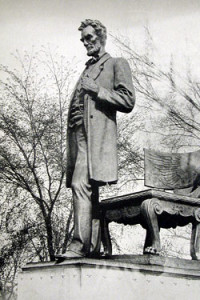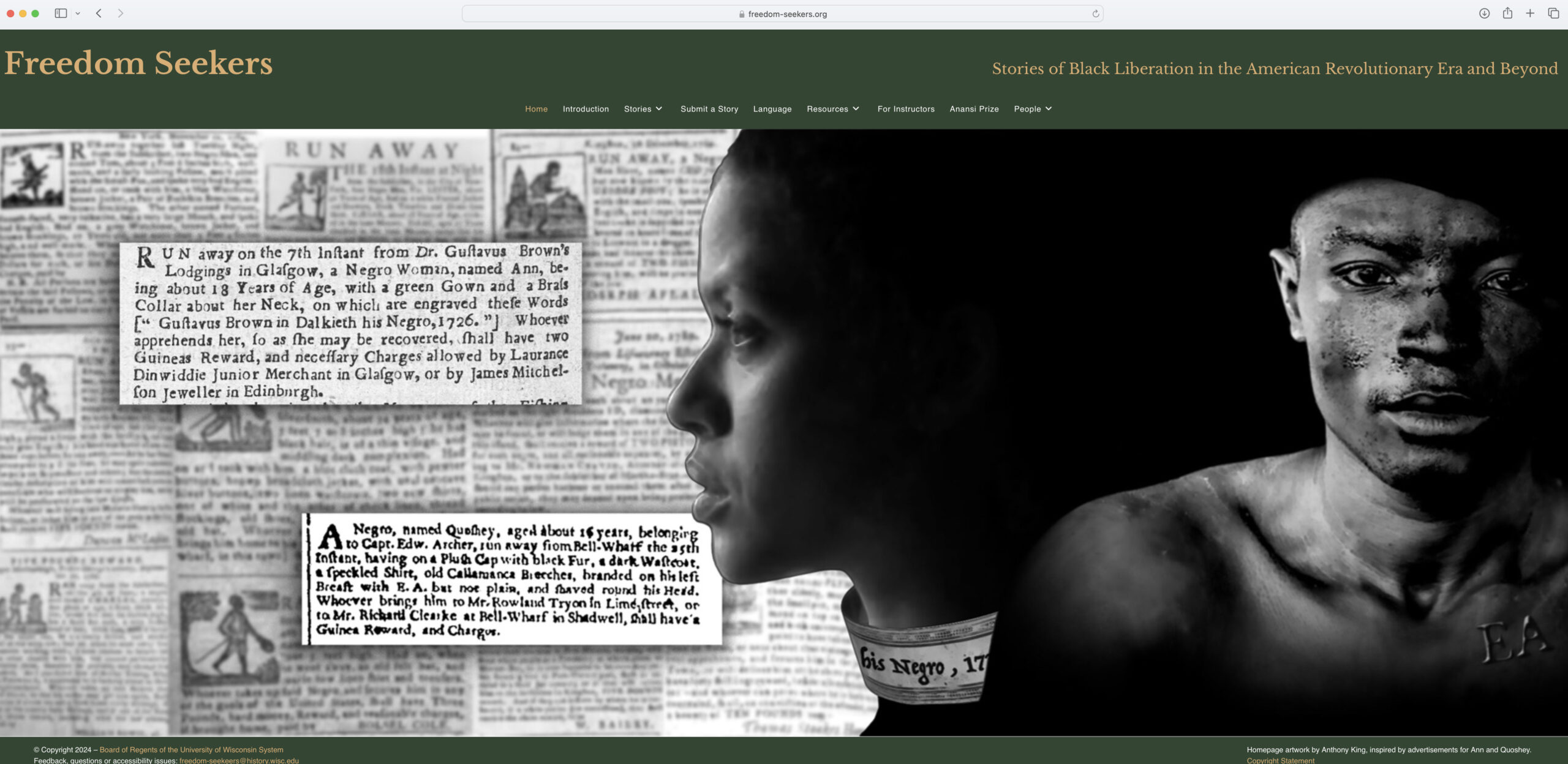Upon the subject of education, not presuming to dictate any plan or system respecting it, I can only say that I view it as the most important subject which we as a people can be engaged in. That every man may receive at least, a moderate education, and thereby be enabled to read the histories of his own and other countries, by which he may duly appreciate the value of our free institutions, appears to be an object of vital importance.
–Abraham Lincoln, 1832
The goal of teaching history is to develop and nurture our students’ ability to interpret history for themselves. In my senior year of college at the State University at Stony Brook, Professor John Pratt enlightened me about the richness of learning exclusively by examining primary sources in “Lincoln’s Statesmanship,” a course devoted to the writings of Abraham Lincoln.
As an ambitious new teacher a little more than a decade ago, I set out to design a unit for my eighth-grade American history class modeled after my favorite college course. When I threw out my enthusiastic proposal, “Today you are all going to become historians,” my proclamation was met with an unanticipated groan. As I soon learned, the prospect of learning as a historian is not as exciting to a thirteen-year-old as it is to a college history major. Looking back, it is easy to see where I went wrong, and how my students’ criticism improved my teaching.
I decided to introduce my Lincoln’s Statesmanship thread during our study of the causes of the Civil War. The students were already familiar with some Lincoln rhetoric; we touched briefly on his “House Divided” speech and the Lincoln-Douglas debates. I compiled a worksheet packet containing excerpts of what I believe are defining speeches: Address before the Springfield Young Men’s Lyceum (1838), Address before the Springfield Temperance Society (1842), Accepting the Republican Senatorial Nomination (“House Divided,” 1858), Address at the Cooper Union (1860), the Gettysburg Address (1863), the Emancipation Proclamation (1863), and the Second Inaugural Address (1865). I placed the students in groups of four, each armed with a dictionary, fully expecting that cooperatively they would be able to digest the speech, dissect it, and draw parallels among them that revealed Lincoln the developing statesman. (Samples from the original Lincoln’s Statesmanship Lesson Plan packet are linked here).
After some toiling, the students voiced their opinion of the assignment, “This is too hard,” “Is this Old English because I don’t understand it at all?” and, of course, “I just don’t get it!” Frazzled, I ran from group to group trying to help, but realized that I was really just telling them the answers. That evening, reflecting on the failure of my lesson, I tried to think of what my professor did that made my learning experience so different.
Recalling the early days of the course, I remembered that Professor Pratt guided us through the speeches, engaging us in discussions of Lincoln’s motives and recurring themes. We were assigned a passage to read before the next session. Although I had prepared for class by pouring over the assigned passage on my own, underlining and defining every word, I ultimately left each class with a much greater understanding of the work. Cooperatively, we went through each piece, line by line. Professor Pratt would ask for our interpretation, and spark the dialogue by posing questions and offering suggestions of his own theories. Looking back, Professor Pratt’s questions always connected to the theme of the course: Lincoln’s statesmanship. Although we did a fairly competent job interpreting the speech, Professor Pratt’s inquiries would help us orient to the “big picture,” namely Lincoln’s goals and a vision of the future for himself and the nation.
Keeping this in mind, and still determined not to give up on my idea, I reworked a part of the lesson and presented it a few weeks later: an examination of the Gettysburg Address using more of a mastery learning approach, modeling the desired skills and then progressing to student demonstrations of this new knowledge. I began by presenting the students with the Gettysburg Address, which we collaboratively dissected line by line. I encouraged them to mark up their copies, underlining and obtaining a definition for every word they did not know.
To motivate the group, I began with a simple math problem:
A score = 20 years
Four score = 4 x 20 = 80
80 + 7 = 87
Four score and seven years ago = 87 years ago
1863 – 87 = 1776
The math revealed to them that the Gettysburg Address could have just as easily started with “In 1776” rather than “Four score and seven years ago.” The students had no idea that “Four score and seven years ago” meant anything, even though about a quarter of them knew the address by heart from memorizing it in fifth grade. A light went on that day. “Oh my God,” they chuckled, “If he meant in 1776, why didn’t he just say that?” O.K., I thought, a teachable moment here. “Why do you think he chose to say ‘Four score’ instead?” They thought, and agreed that Lincoln’s words sound much more official and important even though they were sure a lot of people did not “get it” the way that they do now. The math problem proved to be the key. It demonstrated that there was something to be unlocked in these words and we carried on. Collectively, we went through each passage, putting Lincoln’s words into our own and by the end, they really understood the meaning of the address.
After finishing the speech, I sent them to their groups to rewrite the speeches in their own words. When they were finished, one student from each group came up to share their version of the Gettysburg Address. Here is a sample:
In 1776 very important men made this country and put “all men are created equal” in their directions for how we should run this country. Now in 1863, we are fighting over it. We are gathered here today to dedicate this graveyard for all the people who died at Gettysburg because they believed that slaves should be free. This ground is special because of all the people who fought here. It is important not to forget that all these people died here and that we have to finish what they started. We have to fight harder than ever because they gave their lives for it. When we are finished, and the war is over, they will have died for a good reason because our country will be truly free and our government will be the way it was always supposed to be.
Completing the Gettysburg Address provided a springboard for studying the speeches I presented to them earlier. When we reviewed my earlier assignment together, the answers seemed much plainer to them once they understood the deeper meaning of many of Lincoln’s addresses. They had a much better understanding about the Civil War at this point. Assuredly, that was another component they were missing that I had in my college course: a prior understanding of the time period. In successive years, I have introduced my Lincoln’s Statesmanship theme later in the course and have found the results much more satisfying.
When introducing new documents, I try to follow this example and make it a mystery to uncover and unlock. For some, it is truly enlightening to see the growth of Lincoln as a leader who was a savvy politician, carefully tailoring his speeches to capture his audience and further his political aspirations. At the very least, rather than refer to Lincoln’s words as “Old English,” my middle schoolers have an understanding of epic language and why someone would wish to use it.
Lincoln’s Statesmanship Lesson Plan
Name
Social Studies 8
“The Perpetuation of Our Political Institutions”
–Address before the Springfield Young Men’s Lyceum, 1838
“It is to deny, what the history of the world tells us is true, to suppose that men of ambition and talents will not continue to spring up amongst us. And when they do, they will naturally seek the gratification of their ruling passion, as others have so done before them. The question then, is, can that gratification be found in supporting and maintaining an edifice that has been erected by others?”
1. What is Lincoln predicting about the future of democracy?
“They were the pillars of the temple of liberty; and now, that they have crumbed away, that temple must fall, unless we, their descendants, supply their places with other pillars, hewn from the solid quarry of sober reason.”
2. Do you think Lincoln sees himself as one of those “other pillars”? Who are the pillars?
“When There Shall Be Neither a Slave Nor a Drunkard”
–Address before the Springfield Temperance Society, 1842
“And when the victory shall be complete–when there shall be neither a slave nor a drunkard on the earth–how proud the title of that Land, which may truly claim to be their birth-place and the cradle of both those revolutions, that shall have ended in that victory. How nobly distinguished that People shall have planted, and nurtured to maturity, both the political and moral freedom of their species.”
3. What issue does Lincoln bring into the Temperance debate?
4. What do we learn about Lincoln’s vision for the future of this nation?
–“A House Divided Against Itself”
Speech Accepting the Republican Senatorial Nomination, 1858
“A house divided against itself cannot stand. I believe this government cannot endure, permanently half slave and half free. I do not expect the Union to be dissolved—I do not expect the house to fall—but I do expect it will cease to be divided. It will become all one thing, or all the other.”
5. What is the “house” Lincoln is referring to?
“Our cause, then, must be intrusted to, and conducted by its own undoubted friends–those whose hands are free, whose hearts are in the work–who do care for the result . . . Wise councils may accelerate or mistakes delay it, but, sooner or later the victory is sure to come.”
6. What political party does Lincoln believe must the work be entrusted to?
7. What is the “cause”?
This article originally appeared in issue 5.1 (October, 2004).
Tracey Melandro taught seventh- and eighth-grade social studies for twelve years at East Northport Middle School in Long Island, New York. She now teaches early American history at Suffolk County Community College in Brentwood, Long Island.





















